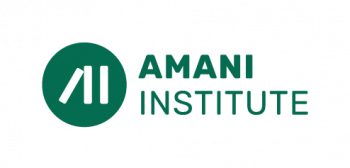By Renata Ferreira, Amani Fellow from Brazil in 2018.
Picture by @jamesponddotco
Just over four months ago, the first cases of COVID-19 were reported in Wuhan, China. The disease spread from its epicentre to the entire world at an exponential rate and with that spread, came seismic changes to our lives.
As an enthusiast of themes such as the future of work, creative leadership, and innovation, this situation motivated me to reflect on how leaders can adapt and contribute to shaping a better “new normal.”
According to this article by MIT Technology Review , things may never be the same again. Another study by Imperial College London concluded that social distancing and school closings are likely to continue, at least until a vaccine is available. I thought about a number of questions that leaders may be grappling with as we try to deal with the effects of the pandemic as well keeping our businesses afloat. These are:
- How can leaders navigate through a world immersed in so many paradigm shifts?
The best way out at the moment is to visualize what we can learn from the situation and how to better prepare for what is to come.
From now on we will need to learn how to work from home, manage remote teams and relationships – in a context of uncertainty and often with children at home! We couldn’t be living a more extreme example of what it means to be at Volatilite, Uncertain, Complex and Ambiguous (VUCA) World. In this context, it is essential that leaders can shepherd their teams towards innovation so that they can find possible alternatives to reinvent their business and work style.
- What are some of the ways to be more creative in the midst of the current uncertainty?
The most likely answer is that we will have to deconstruct much of what we had as truths to make room for new paths. It is certain that to survive in this world we will need to change our mindset from “how much we know”, to one of “ learning and unlearning ” as many times as necessary.
More than ever, we will need to exercise our capabilities of adaptability, communication (to manage remote teams, interests and conflicts), and be open to testing new possibilities all the time.
We know that it is in moments of vulnerability like this that the greatest spaces for innovation emerge because we need to reinvent ourselves and adapt to what does not yet exist. Therefore, this moment generates a lot of opportunities for leaders to exercise their power as shapers of the future, through innovation strategies, which allow us to understand what has changed about what people need and want.
In the webinar “Seeking Creative Authenticity Among Ambiguity”, conducted by the Berlin School of Creative Leadership, important concepts were extensively discussed that reinforced it is no longer a matter of discussing only the future of work, but the “Future of Doing”. This is because, through the present moment, people and organizations are experiencing a new way of working and it is unlikely to ever return to the old methods.
The question now is how can we keep teams motivated even during a scenario of uncertainty, vulnerability, and ambiguity? How do we go about leading remote teams? How do we maintain an environment of creativity and innovation at a distance? How to balance work and personal life?
Everything starts with building trust through spaces that are safe for both exchanging ideas and uncertainties. Trust is one of the main vehicles that teams have to generate a continuous learning environment.
For this reason, it is essential to create a safe space where teams can embrace the vulnerability in sharing their ideas.*
Teams are looking for direction, customers and investors want answers that make them comfortable and safe, but the fact is that leaders don’t know exactly what to do because it is almost to have the answers now. And is an opportunity for leaders to be authentic and transparent. There is no more room for empty taglines that do not generate confidence. Leaders need to work on their emotional intelligence, to be honest with their teams, their customers and themselves.
As an important part of this process, leaders should encourage team members to practice their passions beyond work, as it is in the moments when we give space to our minds that we can give way to creativity.
If you’re looking for ideas on how to stay more creative and encourage your team to open spaces for generating problem-solving ideas, the article “If You Need a Creative Boost, Try These Simple Tips to Spark Your Imagination” will bring you inspiration. Even in this moment of confinement, it is possible to adopt simple yet extremely effective strategies, such as morning rituals, meditation, painting, cooking therapy, sharing ideas and even playing with children to help you find this place to mentally recharge.
- How can my organization use technology to generate social value?
An important phenomenon that can be observed is that in this moment of vulnerability, technology has been a key factor for many organizations to generate connection and relationship with the whole society, far beyond their customers. Many organizations are offering free of charge to everyone what until a few days ago was their most valuable asset, restricted to those who could pay.
Among the long list of offers, we find online courses, entertainment options, games, physical exercises, etc. This reinforces the tendency for brands to be increasingly sensitive to human needs instead of thinking only about profit, they can increasingly expand their ways of contributing to another type of value to society. This is an important differential, as they demonstrate that by adapting their brand behavior to social concerns, they gain more trust and respect from their consumers.
Furthermore, most businesses will need to reinvent themselves in different ways and the use of technology also represents an opportunity, for those who still only act locally, to reach global markets now.
- How can I control anxiety in organizations at times like this?
In the article “How Futurists Cope with Uncertainty”, Amy Webb, explains that organizations are like people and that organizational anxiety can advance quickly due to the lack of concrete answers about how things will be in the future, making leaders make decisions wrong.
Probably you now as a leader are feeling pressured to present the new financial projections and detailed schedules, but the truth is that you can no longer predict what will happen in the next days, months or years. In this article, you will find a simple methodology that closely resembles the SWOT analysis, called Axes of Uncertainty. A practical tool for times of uncertainty, in which the axes will help you to describe possible scenarios with plausible results and impacts.
- What will the post corona virus world look like?
The article published by Yuval Harari “The World After Coronavirus” is a must-read for leaders today, as are his other globally recognized books: Homo Sapiens, Homo Deus and 21 Lessons for the 21st Century. In the article, the author emphasizes that this moment of crisis is opening space for governments and institutions to test social experiments on a large scale and alert to the precautions we must take, as many decisions made now will forever change our health system, economy, politics, and culture. Yuval points out that we will have two main choices to be made.
The first big decision is whether we will leave the task of “protecting” us in the hands of the government through totalitarian surveillance endorsed by technology in favor of health, in which different ways will be used to monitor us, such as what is already being done in China and Israel. Or whether we will choose citizens’ empowerment, which means empowering people so that they are well-informed and can cooperate voluntarily, without losing their freedom.
The second important decision is if nations will opt for nationalist isolation, which would mean that each country is responsible for its own rules, targeting its nation’s interests or if we are going to choose global solidarity, so that we can share information aimed at the good of humanity, regardless of the beliefs or specific characteristics of each nation.
Leaders as designers of the future
Finally, I believe that human beings are designers by nature and that as designers, we can use our potential to create our ideal society. We can design the organizations we want to work for, the systems we want to be part of, the businesses we want to lead, the services we want to access and the products we want to use.
If you are looking for some training that will help you develop as a designer for desirable futures, I recommend looking at the options available at the Amani Institute. I recently completed the Post-Graduation in Social Innovation Management and it is an excellent starting point for anyone looking for tools and innovative techniques to solve the challenges of the 21st century.
More than anything, this moment demands from leaders and their teams a sense of collaboration, global thinking and a good dose of resilience to navigate uncharted waters, with the certainty that this interdependence that unites us will also be able to prepare us for the future we want.
*A great read-option for leaders who want to explore how to cultivate psychological security for their teams in the book “The Fearless Organization: Creating Psychological Safety in the Workplace for Learning, Innovation, and Growth” by Amy C. Edmonson.





